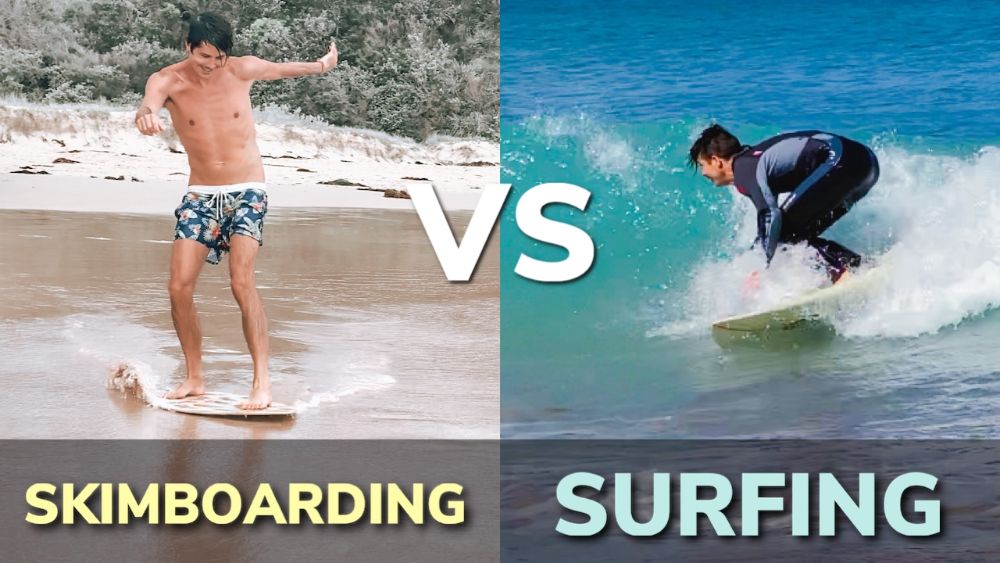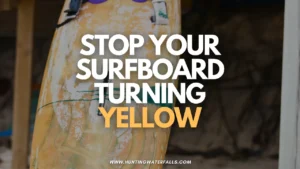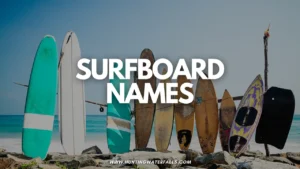Whether you're picking up skimboarding or surfing for the first time or you're considering switching from one sport to the other you might be wondering what you're going to be in for. Is skimboarding easier than surfing or is the opposite true?
Skimboarding is easier to get started but harder to catch waves when compared to surfing. Most people can skim fairly easily on flat water but actually catching waves is difficult. Surfing is harder to learn in the beginning but easier to master over time. Both sports are very challenging if you want to get good.
As someone who has learned how to surf, is teaching my kids how to surf and is currently learning how to skimboard I can tell you that for both surfing and skimboarding the learning curve is steep and difficult.
Is Skimboard Easier Than Surfing?
It is more difficult to catch waves on a skimboard than on a surfboard, but just learning how to skim around on the wet sand and perform basic tricks is easier than surfing. Both skimboarding and surfing are challenging sports with a steep learning curve.
If you're considering one sport or the other or currently surf or skimboard and want to try the other sport check out my article on skimboarding vs surfing for all the similarities and differences between them.
Standing Up On a Skimboard is Easier
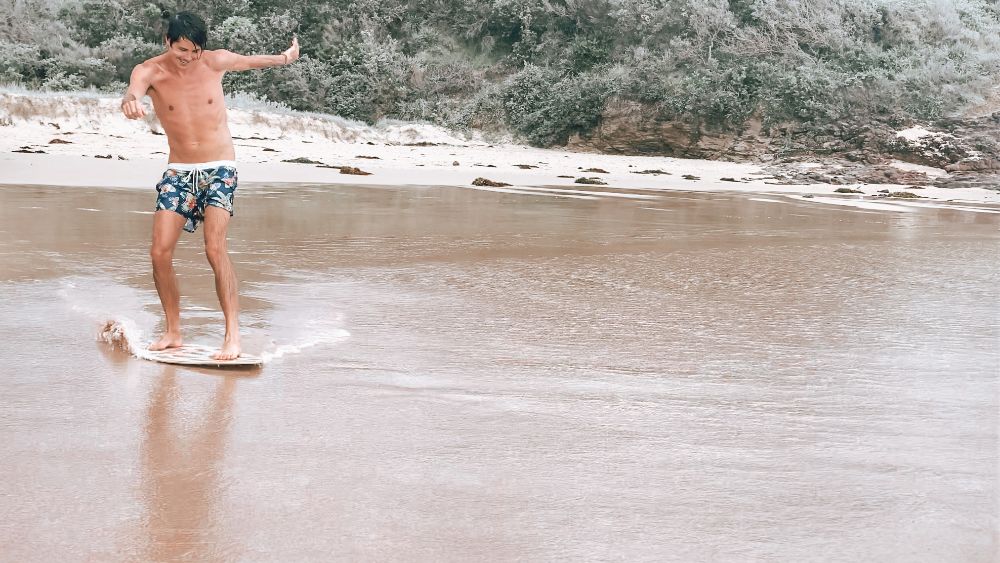
If you're by yourself then learning how to stand up on a skimboard is easier than learning how to stand up on a surfboard.
This is because you don't need to wait for a wave to start skimboarding, in fact it's recommended you begin on flat water.
You don't even have to start by sprinting (which is a mistake I made) but you can start by walking or slowly jogging before jumping onto your board.
Skimboard traction pads can make foot placement easier and more intuitive when you're getting started or simply waxing your skimboard properly the first time can also help you get started easier.
I suggest learning the “one step drop” which is the most common way to get onto your board. Watch the video below for good instructions.
Standing up on a surfboard for your first time can be a little more difficult, especially if you're learning by yourself.
Choosing the right tide and swell to go out in will be helpful (small waves are best to start on) but it'll likely take you multiple goes before you can stand up and catch the whitewash in.
For my daughter (who is 11 and loves surfing) it took her around 10-20 sessions over a couple of months to be able to consistently stand up and catch the whitewash into shore. Many many tears were had along that journey.
Skimboarding Gives You More Repetition

If you want to get good at something then repetition and frequency is absolutely key.
With skimboarding you can go and practice every single day no matter what the surf conditions and you can get better very quickly. During each session you'll have tens or even hundreds of attempts (depending on your fitness level and time spent).
There is little to no break between attempts giving you more repetition to learn.
With surfing you can miss days or weeks when the conditions aren't right for you. Especially as a beginner when you need smaller and calmer conditions in order to learn.
When you are out there wave frequency is a lot less than skimboarding so you have less attempts to learn.
Catching Waves Is Easier on a Surfboard
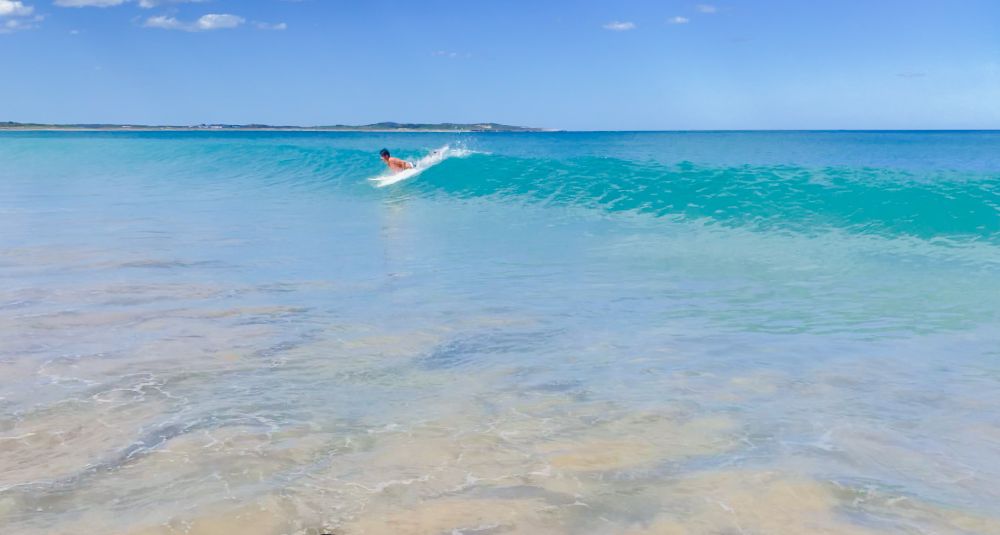
The flipside to this is catching waves on a surfboard is a lot easier.
This is mainly because you are paddling in the direction of the wave and in the beginning you don't have to know how to turn your board.
Even when surfing unbroken waves you don't have to learn any sharp turns you just need to be able to travel across the face of the wave. You've also got your fins to give you stability and make things easier.
Once you can do this surfing becomes extremely enjoyable even if you aren't doing any tricks yet and you are now effectively a competent surfer. You can add in turns and cutbacks if you want but you don't have to.
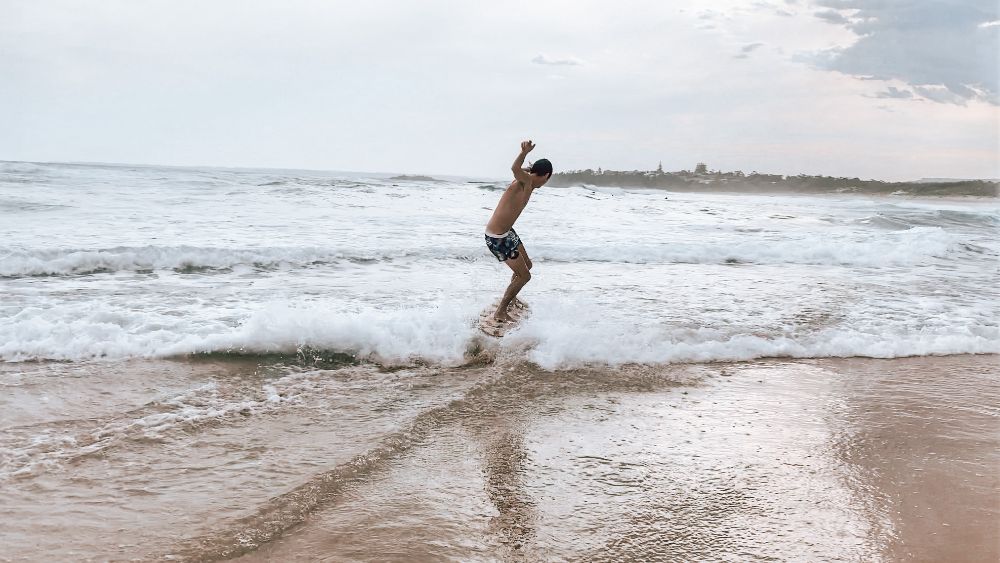
Catching waves on a skimboard is a lot harder.
Your momentum is heading directly at the wave in the opposite direction the wave is going.
This means you need to learn how to do very sharp turns in order to get on the wave and then ride the wave. Add to this the fact that you don't have any fins to give you control and need to use your back foot and rails to do the turns.
The turns skimboarders use to get onto waves would be considered advanced turns for a surfer.
So while skimboarding may be easier in the beginning it quickly becomes harder than surfing if you want to actually be catching waves.
Determination here is key. If you keep trying, keep doing attempts and try to learn from each attempt you will get there.
Both Skimboard and Surfing Require a High Level of Fitness
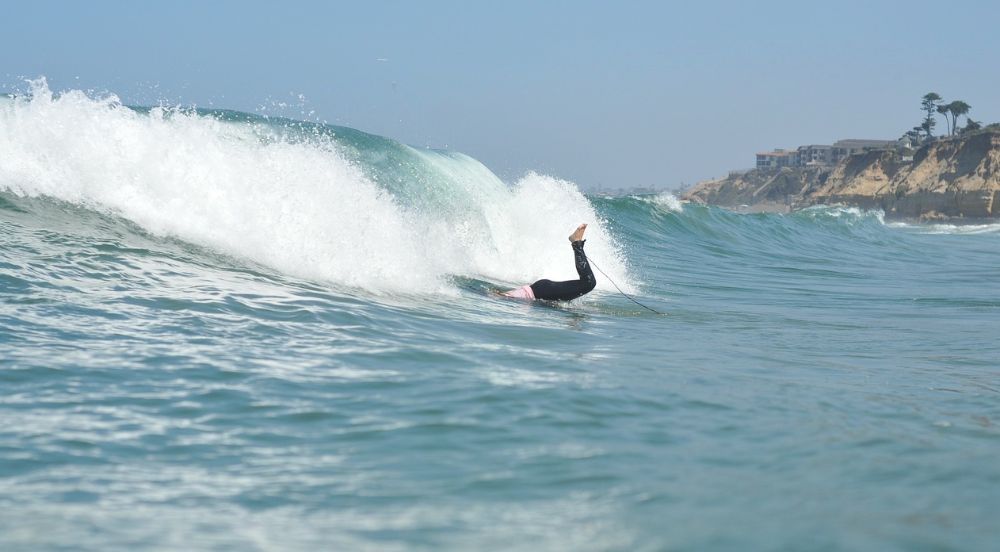
Skimboarding is extremely exhausting as you need to do a lot of sprinting/running in order to catch waves and there isn't a lot of time between waves so theres lots of running to be done.
Surfing is also exhausting but in a different way. There is a lot of paddling involved to get out the back past the breaking waves and then you need to paddle quickly in order to get onto waves.
Both will require you to build up your fitness over time. But the more you do it the fitter you will get and the better you'll become.
Is It Easy To Pick Up Skimboarding as a Surfer?
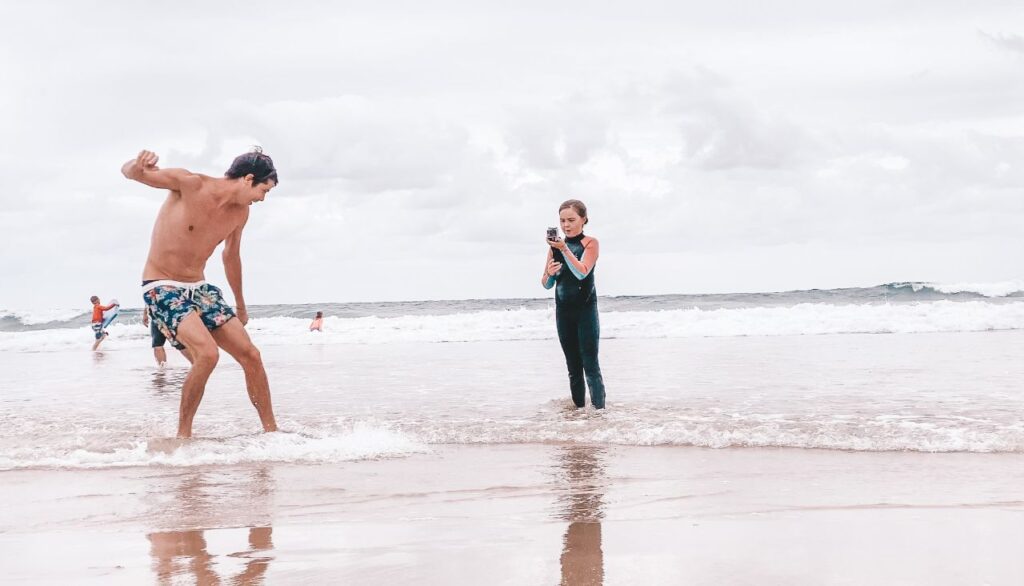
As someone who surfed for nearly 20 years before picking up skimboarding I had assumed that it would be easy to pick up skimboarding as a surfer. The opposite turned out to be true.
It is not easy to pick up skimboarding as a surfing. Jumping onto the board at high speeds takes a lot of practice as does successfully skimming long distances. Entering a wave on a skimboard is also difficult as it requires a sharp turn with no fins. It's easier for a skimboarder to pick up surfing than the other way around.
When I got my first skimboard (a cheap wooden one) I thought I would be catching waves like you see the pros on instagram doing. But my lack of skill was actually embarrassing and it's humbling to go from carving up a wave to struggling to even get on the board.
The different type of fitness was also exhausting. Effectively sprinting for an hour will quickly tire out even the fittest surfers on there. You don't really paddle as all so all that arm, chest and shoulder strength I've built up meant nothing. My legs and strangely my hips KILLED me the next day after skimboarding for about an hour.
The drop (jumping onto your board) was the most technical aspect of learning how to skimboard in the beginning. A good drop gives you good speed and distance while a bad drop ruins any chance of a good skim or ever catching a wave.
Getting onto the waves was also completely different to surfing. You're effectively skimming straight at the wave and need to do a sharp turn on the lip (with no fins mind you) in order to enter the wave.
Turns this sharp are considered advanced surfing techniques and they were difficult to do.
You also can't really catch waves on a cheap wooden skimboard. They aren't buoyant enough and will quickly lose momentum and sink. You really need to invest into a more expensive board if you want to start catching waves properly as a skimboarder. Click here to see the best skimboards for beginners.
Is It Easy To Pick Up Surfing as a Skimboarder?
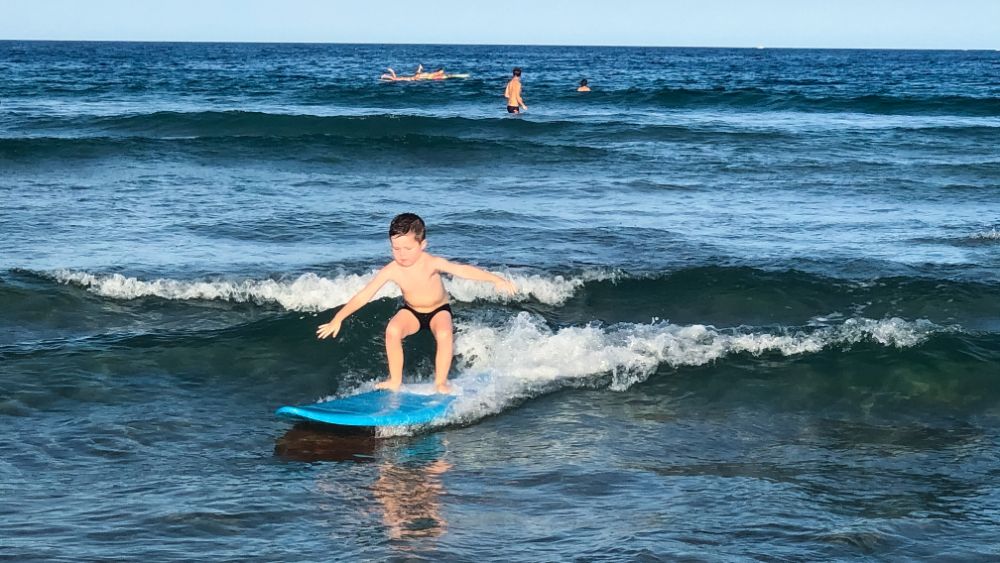
If you've started off as a skimboarder and want to give surfing a try is it easy to pick up surfing as a skimboard or will the transition be as hard as from surfing to skimboarding?
Picking up surfing as a skimboarder is relatively easy compared to the other way around. You will need to build up your paddle fitness and learn wave selection and takeoff but as a general rule if you can ride waves on skimboard you should be able to ride waves on a surfboard without too much difficulty.
With a surfboard you'll get more buoyancy allowing you to catch waves easier than on a skimboard.
You'll have to adjust to having fins as you won't need to use your rails or back foot as heavily to make turns on the waves but the turns you do as a skimboarder just to get on a wave are pretty advanced surfing turns so while it may take you a little bit to get used to the difference you should pick it up fairly quickly.
Paddle fitness and wave selection are arguably the hardest things for skimboarders to learn when transitioning to surfing.
With skimboarding you can stand on the same spot on the beach and catch wave after wave. With surfing you've got to first paddle out the back and learn to duckdive to get under waves. Once out the back you have to find the right position and know how to hold position.
Wave selection is going to be different as well. But if you know how to select waves to skimboard on then it shouldn't take you long to work out how to select the right waves to surf on.
Can You Surf With a Skimboard?
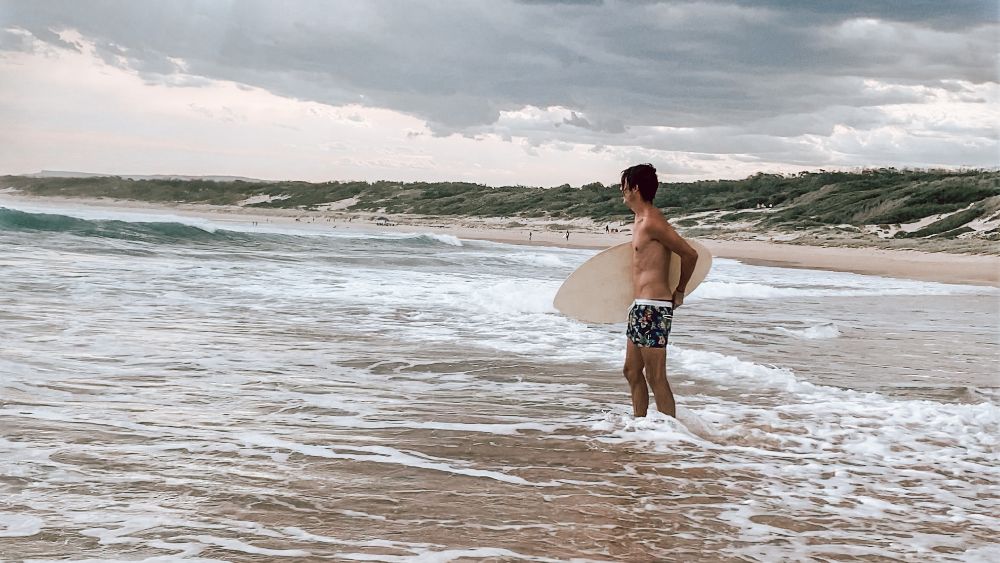
If you're enjoying skimboarding but are envious of the surfers catching those big waves out the back you might be tempted to paddle your skimboard out into the line up and try and surf with your skimboard. Is it possible to do?
While it is possible to surf with a skimboard it very difficult to do. Skimboards are smaller and not as buoyant as surfboards so paddling onto waves is extremely difficult and maintaining speed can also be a challenge. The lack of fins will cause your board to slide out from under your feet during takeoff and turns unless you dig your rails in hard.
At times I've taken my skimboard out the back after getting sore and tired from so much running on the beach. Each time I struggled to catch many waves and when I did I found it very difficult to stand up.
The skimboard acted more like a bodyboard than a surfboard. I could catch the waves lying down and that worked just fine if I could get onto them, but it didn't really put me in a good position to stand up.
I'm sure a more talented skimboarder than myself could surf using a skimboard but I would assume most of them would just use a surfboard if they were going surfing.
Below you can see a video of a professional skimboarder catching much larger waves. While he manages to do it and it is possible you can see the difficulty he has on the waves.
Some waves he slides out and falls off and on other waves he has so much speed that the lack of fins make turning extremely difficult. He has to do wide sweeping turns and even grab the rail in order to perform a turn.
While it's impressive what he does and it proves that YES you can surf on a skimboard you can see the difficulty he has compared to surfers. You're much better off surfing with a surfboard than a skimboard.
How Difficult is Skimboarding?
If you haven't started skimboarding yet but want to get into it how difficult is it?
Skimboarding is a difficult sport. You have to be in good physical shape and be able to sprint regularly, be confident jumping onto a moving board and be prepared to take some pretty hard falls. Riding waves as a skimboarder takes a long time to master.
Who Has Right of Wave? Surfers or Skimboarders?
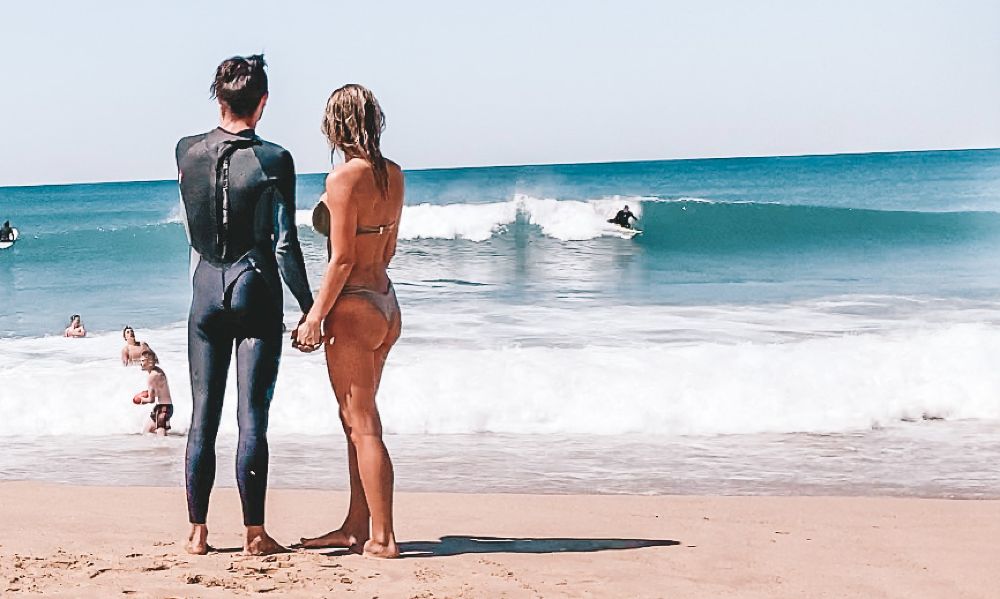
When surfing there are rules and ettique to determine who has right of wave on the wave and who's wave it is. “Dropping in” on someone is when you get onto a wave that was already someone else's.
But what about with skimboarding? If you're approaching a wave from the beach and a surfer is catching the wave out the back who has right of wave?
Generally speaking skimboarders do not have right of way over surfers if the surfer is on the wave first. The surfer who is closest to the peak or curl of the wave or who is on the wave first has right of wave. However, skimboarders would have right of way over non-serious bodyboarders (eg. a bunch of kids catching waves).
There may be some waves (eg. The Wedge) where the skimboarder is actually the first on the wave and will have right of wave over surfers trying to enter the wave later. The first wave in the video below shows this perfectly

